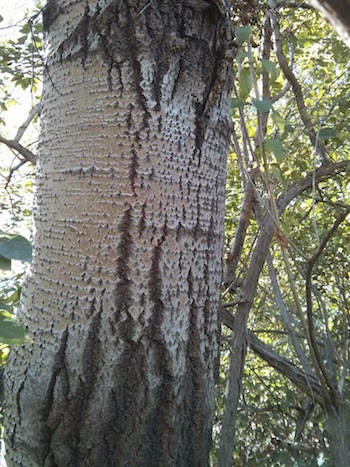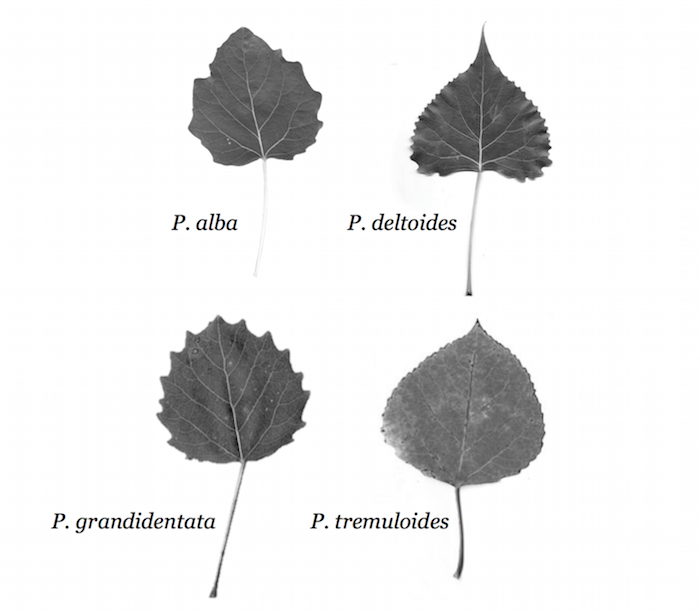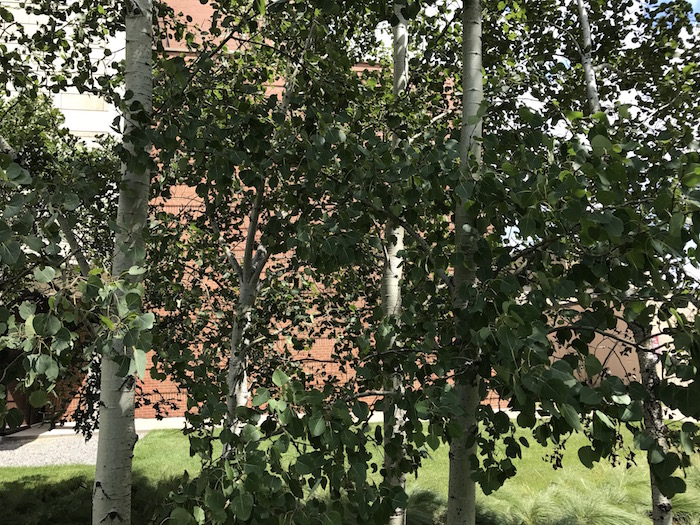
Description:
Quaking aspen, also called trembling aspen, is said to be the most widely distributed tree in North America. It has with a long trunk and pyramidal to rounded shape with smooth and greyish white bark when young, turning to chalky white with warty black bumps with age. Leaves are alternate and simple, round, and finely toothed with a lustrous green above and hairy light green below. It has a flattened leaf petiole which causes it to quake or tremble in the slightest of breeze, hence the name quaking or trembling aspen. Quaking aspen are dioecious and have both male and female catkins on separate plants.
Quaking aspen can spread vegetatively by sprouting stems from their shallow roots and creating large masses of trees that are genetically identical, known as clones. A group of male trees in South-central Utah, known as the Trembling Giant, was once thought to be the largest living organism. Wood of quaking aspen is important as a source of fiber; tongue depressors and popsicle sticks are often made of quaking aspen wood.
Issues:
Quaking aspen are susceptible to several problems including leaf spot, rust, dieback, powdery mildew, forest tent caterpillars, and cankers. Hypoxylon canker is especially damaging in the Twin Cities, which is caused by a fungus, Entoleuca mammata. Infected trees usually die within 3 to 8 years.
Other Resources:
UMN Extension - Hypoxylon canker




